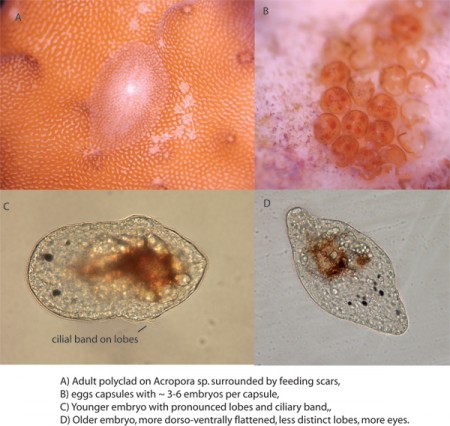AEFWs are one of the most feared pests in SPS reefkeeping—and for good reason. These nearly invisible flatworms can devastate prized Acropora colonies in a matter of weeks. Understanding what they are, how they behave, and how to treat and prevent them is critical to protecting your tank.
What Are AEFWs?
AEFWs (scientific name: Prosthiostomum acroporae) are a species of flatworm that feed specifically on Acropora coral tissue. They are flat, translucent to tan, and often go unnoticed until damage is severe. Unlike harmless flatworms, these are obligate coral predators.
They reproduce by laying tiny, brownish egg clusters on the underside or base of Acropora branches. Adults burrow into coral tissue, consuming it slowly while staying hidden from view.
Signs of Infestation:
- Faded or pale patches on Acropora
- Tissue loss starting at the base
- Lack of polyp extension
- Visible bite marks or circular feeding scars
- Small, brown flatworms on coral when dipped
- Eggs under coral branches or base
By the time you see symptoms, the population may already be well established.
How Do AEFWs Spread?
They are almost always introduced on infected coral frags. The flatworms or their eggs can hitchhike on frag plugs, skeletons, or coral tissue. AEFWs are not free-swimming in the water column; they spread tank-to-tank via coral transfer.
Treatment Options:
1. Dipping Infected Corals
Dips such as DipX or ReefPrimer can knock off adult AEFWs but will not kill eggs. Dipping should be repeated every 5–7 days over 4–6 weeks to interrupt the life cycle.
- Agitate the coral during dips with a turkey baster.
- Rinse in clean saltwater after each dip.
2. Manual Egg Removal
Use a soft brush or tweezers to scrape eggs from coral bases. Eggs are sticky and hard to kill with dips, so mechanical removal is key.
3. Quarantine and Observation
Isolate infected corals. Observe them in a separate system where dips and inspection are easier. AEFWs don’t infect other coral types, so they won’t spread unless you move contaminated frags.
4. Natural Predators (Limited Help)
Some aquarists report success with:
- Wrasses like Melanurus and Sixline wrasses (may eat free-swimming juveniles)
- Yellow Coris Wrasse (moderate help)
But predators won’t eliminate an infestation. They’re best used as part of a broader plan.
Long-Term Prevention:
- Always dip and inspect new Acropora frags
- Quarantine all SPS corals for at least 2 weeks
- Frag and inspect coral bases periodically
- Use bare-bottom quarantine tanks to make pests easier to spot
Summary:
AEFWs are a serious pest, but they can be managed or even eradicated with discipline. The key is early detection, aggressive dipping, and egg removal. Prevention is far easier than cure—so never skip the dip, and quarantine like your reef depends on it (because it does).
